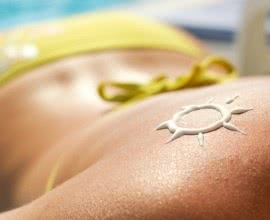Cheek Implants: for Aging or Asymmetry
Whether you intend to increase the symmetry of your face or limit signs of aging, cheek implants can offer big improvements to facial features and proportions. Other options that sometimes give similar results include fillers and facial plumping serums like Botox, yet these procedures do not offer long-lasting results.
Purpose and Expectations
Some patients carry misconceptions with them into the surgeon’s office as to what cheek implants will do for them. Misconceptions might include anything from “they will give me a chiseled look” to “they will lift up the excess skin of the jowls” even though reality may be quite different. Firstly, these particular implants should serve to primarily fill out the hollow space beneath the eyes and in the upper cheeks. Otherwise known as the tear trough, this space suffers a loss of volume naturally as we age. So, some patients might therefore prefer to put money towards long-lasting implants instead of costly anti-aging creams or temporary fillers. Furthermore, cheek implants can do wonders for patients whom see an imbalance between facial features, either generally or between either side of the face.[1][2]
Implant Material
Medical grade silicone has long been established as the material of choice for implants due to its record of safety and biocompatibility.[3] Silicone trims well and bends easily to the already established contours of your facial bone; plus, silicone is easily penetrable with fixation screws.[4] By no way would you want floating implants or implants made from a material that could fragment or become ingrown to tissue.[5] A screw-fixated facial implant is therefore the most reliable material of choice and a mainstay in cosmetic surgery. They last indefinitely but can also be removed in 10 minutes or changed in size in about 25 minutes, if circumstances require it.[6]

Recovery after cheek plastic surgery
Keep the dressings that your surgeon placed upon the skin in place for 2 or 3 days. Expect inflammation and tenderness around the incision site but feel free to utilize preapproved medications that will help you alleviate burdensome discomfort. Any sensation of tightness or strained skin in the cheek area after surgery subsides within a week, and 6 weeks should clear you of most swelling. You may return to life as normal in just a week and a half but refrain from rigorous activity for a few days longer.[7]
Incision Location
If you plan to get cheek implants in addition to another cosmetic procedure such as a facelift, most commonly, or an eyelid surgery, the surgeon may utilize the already-made incisions to also place the cheek implants.[8] Otherwise, the typical incision spot chosen by surgeons is the lower eyelid or just inside the upper lip, which may force you to pay closer attention to your dental hygiene prior to and after surgery. For those curious about anatomy, the surgeon will form a pocket between the infraorbital foramen, pyriform aperture, orbital rim and teeth, which are all openings in the skull within the adjacent cheek area.[9]
Conclusion
Once in place, silicone cheek implants can last the rest of your lifetime. Rarely are they required or requested to be removed but, if circumstances require so, silicone implant removal takes only minutes. This may therefore be the most cost-effective choice of cosmetic surgery for you to nock back signs of aging, restore symmetry between features or simply enhance the natural contours of your face. Quick. Long-lasting. Reversable.
Sources:
[1] Niamtu, Joe. “Some Doctors Say Cheek Implants Don't Work?” Some Doctors Say Cheek Implants Don't Work?, July 2016, www.lovethatface.com/2016/07/06/some-doctors-say-cheek-implants-dont-wor....
[2] “Why Do People Get Chin and Cheek Implants?” The Institute of Aesthetic Surgery, 29 Mar. 2017, instituteofaestheticsurgery.com/people-get-chin-cheek-implants/.
[3] “Cheek Implants.” HopkinsMedicine.org, Johns Hopkins Medicine, www.hopkinsmedicine.org/health/treatment-tests-and-therapies/cheek-implant.
[4] Niamtu, ibid.
[5] Ibid.
[6] Ibid.
[7] “Cheek Implants”, ibid.
[8] Kohout, Mark. “Facial Implants of Cheeks, Chin and Jaw”, https://drmarkkohout.com.au/wp-content/uploads/2019/02/FacialImplantsoft....
[9] Niamtu, ibid.














